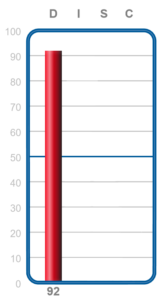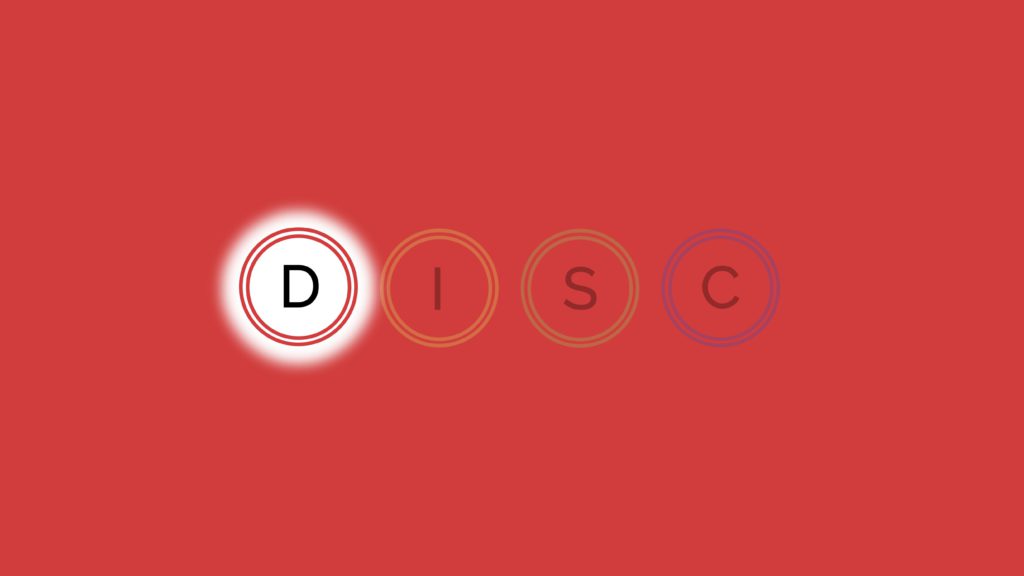The D in DISC is Dominance. Dominance reflects how people respond to problems.
Scores above 50 are considered High D’s. High D’s tend to address things directly and urgently, not minding if conflict is created. High D’s like intense environments with challenges and competition. The higher the D score the more these characteristics are true.
Scores under 50 are considered Low D’s. Low D’s tend to be deliberate and thoughtful, avoiding friction while solving problems. Low D’s prefer to work in more peaceful, collaborative settings. The lower the D score the more these characteristics are true.

From Indigo CEO Sheri Smith:

Can all DISC scores be leaders?
“I get this question often and the answer is, “Absolutely!” Western society tends to characterize High D’s and High I’s, only, as leaders. Our workplaces also reinforce this stereotype. However, there are many examples of people throughout history who lead with all the styles. I love to use Mother Theresa and Gandhi as examples. Both of them were likely Low Dominance and High Steadiness. They led by being consistent, peace loving, and collaborative.”
DISC ACTIVITY: DOMINANCE
Start by identifying your Dominance / D score on the DISC grph. You can find your D Score below the red bar on the DISC graph. Do you have a high, medium, or low score?
Read through the lists of traits below and write down the ones you think best describe you. If you are a Low D, focus on the Low D list. If you are a High D, focus on the High D list. Note that if your score is near the middle, you may identify with traits from both lists.
Low D Traits:
Team Player
Diplomatic
Cooperative
Agreeable
Collaborative
Modest
High D Traits:
Adventuresome
Direct
Competitive
Bold
Decisive
Results-Oriented
When have these traits worked well for you (school, work, leisure)? What are some challenges or problems you’ve faced exhibiting these traits?
DOMINANCE AND LEADERSHIP
Dominance is a quality that is often associated with leadership. It is important to know that both High and Low D’s make great leaders, but their leadership style looks different.
What does a High Dominance leadership style look like? (Remember, this is a “directive” style.)
What does a Low Dominance leadership style look like? (Remember, this style is collaborative and consensus in nature.)
What is your leadership style?
Note: We are not suggesting that you behave differently, but that you take ownership for your behavior and the impact it can have.
For more information about the Indigo Assessment, visit https://indigoeducationcompany.com/indigo-assessment/

